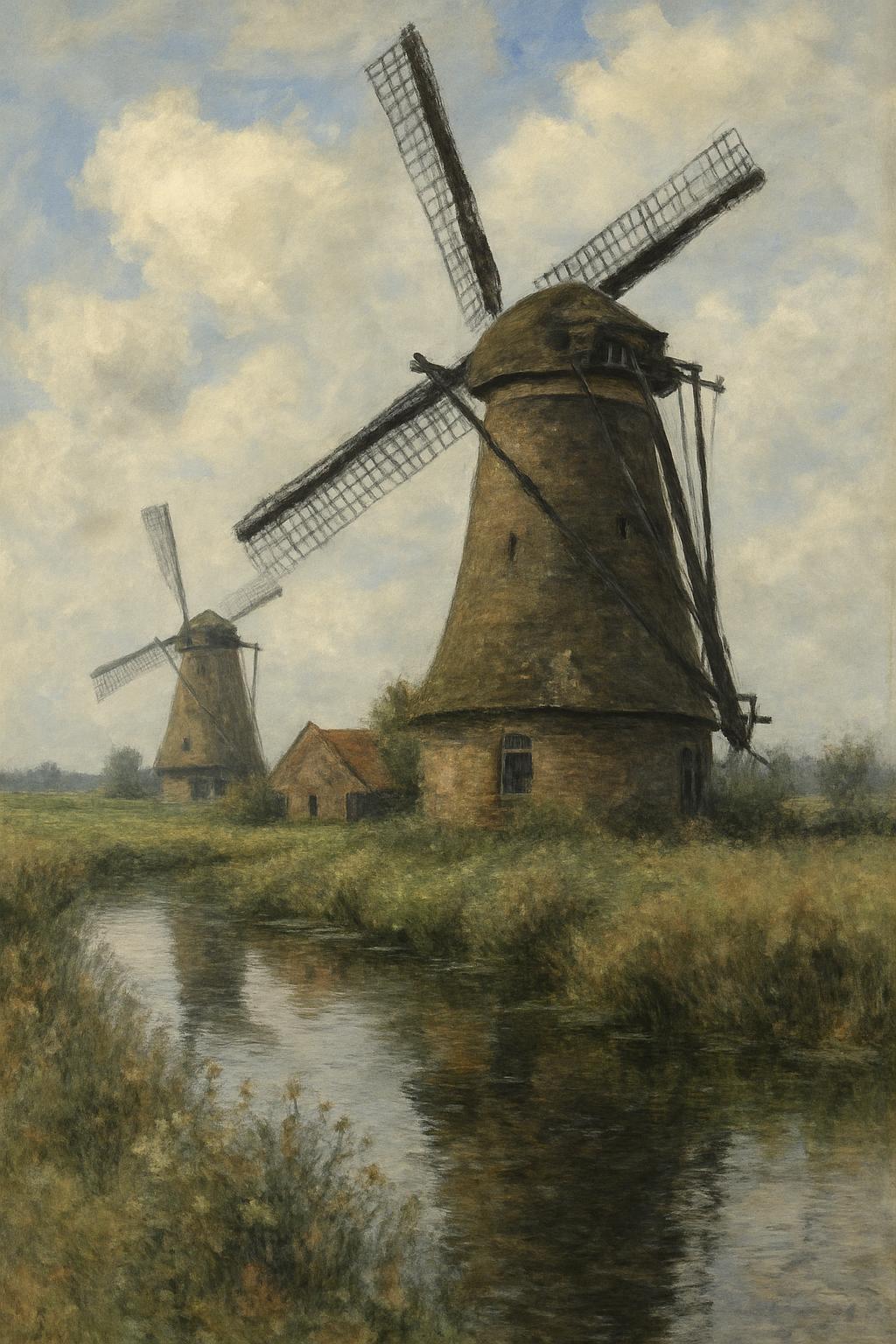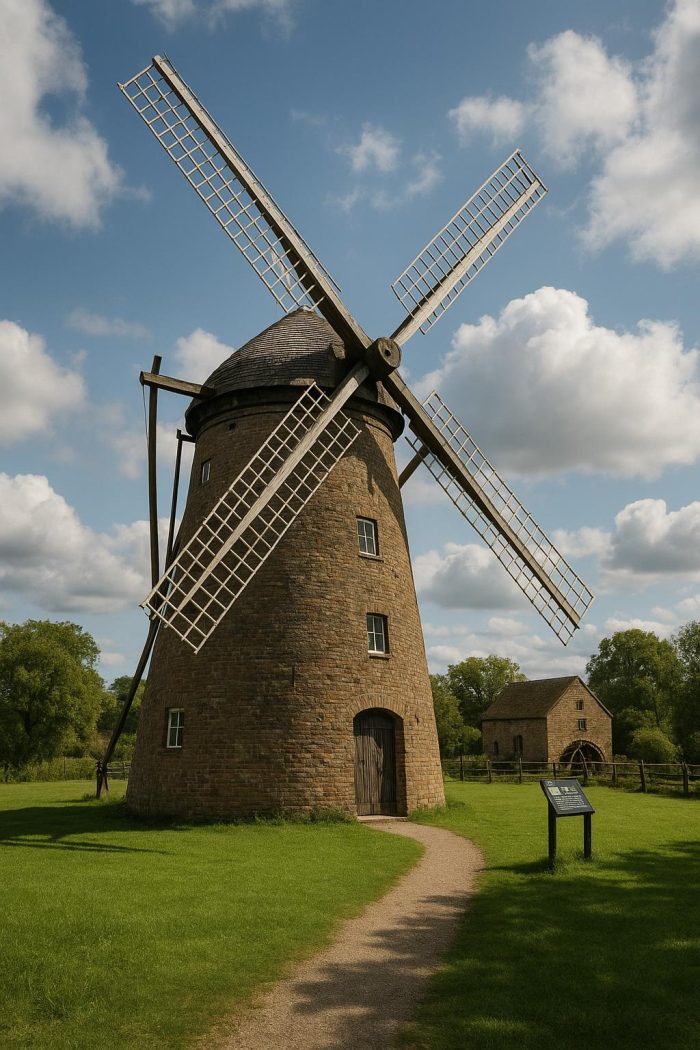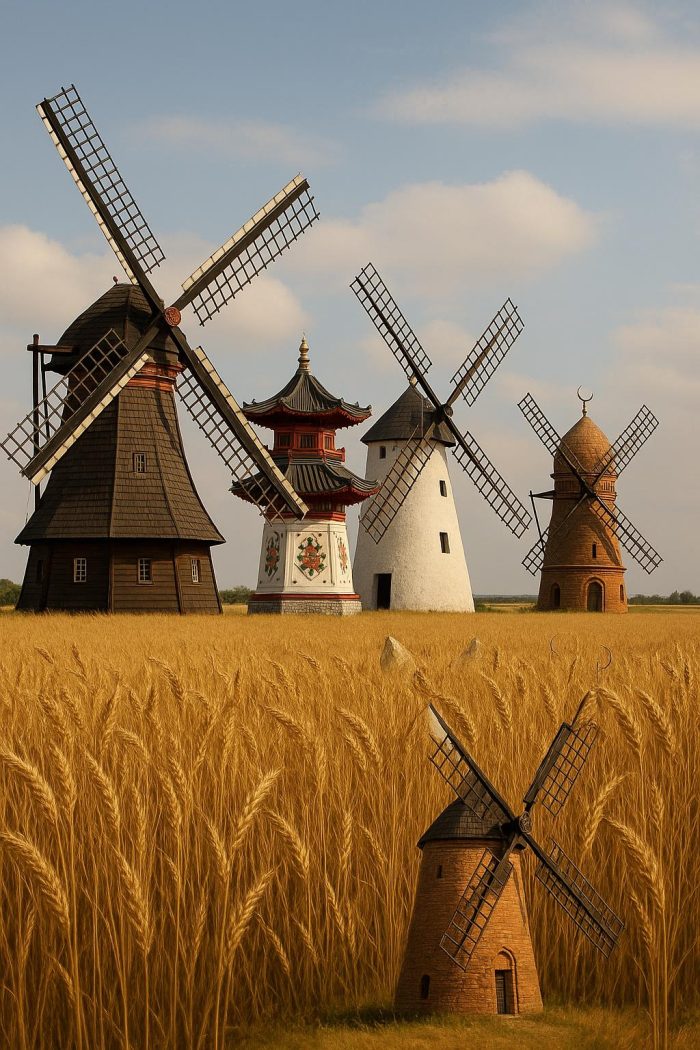Claude Monet and His Paintings of Mills
Claude Monet, a seminal figure in the Impressionist movement, is widely recognized for his landscape paintings that adeptly capture the ephemeral dance of light. Among his vast array of works are numerous paintings that feature mills, which illustrate his fascination with both rural charm and industrial motifs. Through his art, Monet not only reveals his unique perception of the world but also revolutionizes the manner in which ordinary scenes are viewed and experienced.
The Context of Monet’s Mill Paintings
The essence of Monet’s intrigue with mills can be traced back to his deep interest in portraying the nuances of French rural life and its transition during the late 19th century. This period was marked by significant shifts, both socially and geographically, as industrial advancements began to intermingle with traditional agricultural practices. Mills, due to their distinctive architectural form and kinetic properties, offered Monet an ideal subject to explore variances in light and shadow dynamically. This duality of stationary structure and constant movement provided a compelling backdrop against which Monet could experiment and innovate.
Key Paintings Featuring Mills
Monet’s paintings of mills stand out for their diverse composition and technique, reflecting the continuous evolution of his style, marked by an adventurous spirit in both color application and brushwork. Although these works are not as extensive or renowned as his iconic series like the Water Lilies or Haystacks, they offer an invaluable glimpse into his artistic progression and personal interpretation of familiar themes.
Notable Examples
A notable example of Monet’s fascination with mills is The Mill at Limetz, created in 1888. This painting exemplifies his masterful technique of capturing ephemeral moments and the fleeting impact of sunlight on the landscape and structural forms. The play of light in this piece reveals Monet’s preoccupation with naturalistic effects, fostering a deep sense of atmosphere.
The Mill at Vervy is another significant work in this grouping, revealing Monet’s penchant for vibrant color palettes and animated brushstrokes. This particular painting underscores Monet’s adeptness at depicting atmospheric conditions, while simultaneously showcasing his skill in rendering the harmonious coexistence of human constructs and the natural world around them.
Exploration and Technique
In Monet’s mill-focused paintings, one often sees the use of loose brushwork, a hallmark of his style that allows for the seamless integration of colors directly onto the canvas. This method is essential in translating the sensations of light and movement into visual form, creating works that breathe with life. By anchoring these paintings around mills, Monet effectively contrasts man-made structures with the tranquility of nature, illustrating a symbiotic relationship between the two entities.
Impressionist Influence
As a profound adherent of Impressionism, Monet distanced himself from the pursuit of photographic realism. His objective was not replication but rather the portrayal of the emotional and transient qualities laden within a scene. This approach is evident in his mill paintings, which serve as interpretations driven by immediate experiences rather than painstaking reproductions of reality.
The Impact of Monet’s Mill Paintings
While perhaps not achieving the commercial success of some of his better-known series, Monet’s mill paintings significantly contribute to his artistic legacy. They offer a portal into the confluence of industry and nature, engaging viewers with a refreshed perspective on how traditional agricultural and industrial icons can be reimagined through the lens of Impressionism. These works encourage exploration beyond their surfaces, inviting contemplation of deeper thematic elements.
Further Exploration
For those interested in delving deeper into Monet’s vast contributions to art, explorations of exhibitions, studies, and compilations of his work are invaluable. Many resources, including scholarly articles and documentaries, provide comprehensive analyses of his techniques and thematic directions, offering a profound understanding of even his lesser-known pieces.
To fully appreciate the breadth and depth of Monet’s artistic journey, including his mill paintings, is to gain a more nuanced view of his evolution as an artist. These works underscore his dexterity in portraying a wide range of subjects, all handled with sensitivity and imaginative prowess. Through his distinctive lens, Monet continues to enrich our appreciation of the ordinary, elevating everyday scenes to extraordinary art forms.



